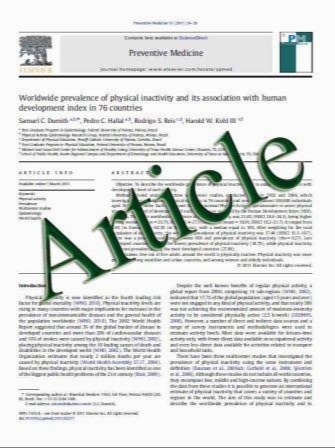Could the serial determination of Ca15.3 serum improve the diagnostic accuracy of PET/CT? Results from small population with previous breast cancer
- نوع فایل : کتاب
- زبان : انگلیسی
- مؤلف : Laura Evangelista Zora Baretta Lorenzo Vinante Anna Rita Cervino Michele Gregianin Cristina Ghiotto Fernando Bozza Giorgio Saladini
- چاپ و سال / کشور: 2011
Description
Objectives A single value of tumor marker elevation is not used for the diagnosis of breast cancer (BC) relapse, whereas the serial measurements which confirm a persistent Ca15.3 increase can represent an early signal of tumor relapse, even if described in asymptomatic patients without any other clinical or instrumental signs of cancer. The aim of this study was to assess the relationship between serial measures of Ca15.3 and 18F-fluorodeoxyglucose (FDG) positron emission tomography (PET)/computed tomography (CT) findings in patients with already treated BC during follow-up. Methods We retrospectively selected 60 patients (mean age 62 ± 11 years) with previous history of BC, already treated with surgery and other treatments. Three serial measures of Ca15.3 were collected within 1 year before PET/CT examination, respectively, at 12–9 months (297 ± 30 days), 9–3 months (154 ± 51 days) and 3–0 months (46 ± 28 days). Clinical outcome or imaging follow-up data were used to define disease relapse. The increase in tumor marker value was compared with PET/ CT results and disease relapse. Coefficient of variation (CV) and ROC curves were used. Disease-free survival (DFS) curves were computed by Kaplan–Meier method. Results PET/CT was negative in 36 (60%) and positive in 24 (40%) patients. The median time between initial treatment and PET/CT was 3 years. CV of the Ca15.3 serial determinations was significantly higher in patients with positive than negative PET/CT (39 vs. 24%, p\0.05). Disease relapse was found in 25 (42%) patients, of these 21 (88%) had positive PET/CT. ROC analyses showed that an increase of Ca15.3 between the 2nd and 3rd measures have better individuated positive PET/CT and disease relapse (AUC 0.65 and 0.64, respectively; p\0.05). DFS was higher in patients with negative than positive PET/CT (65 vs. 15%, p\0.05). Conclusions Serial increase of Ca15.3 could be considered optimal to address FDG PET/CT examination during BC patients follow-up. PET/CT performed just on time might allow, earlier and with higher diagnostic accuracy, the detection of disease relapse in BC patients.
Ann Nucl Med DOI 10.1007/s12149-011-0488-9 Received: 27 January 2011 / Accepted: 16 March 2011


